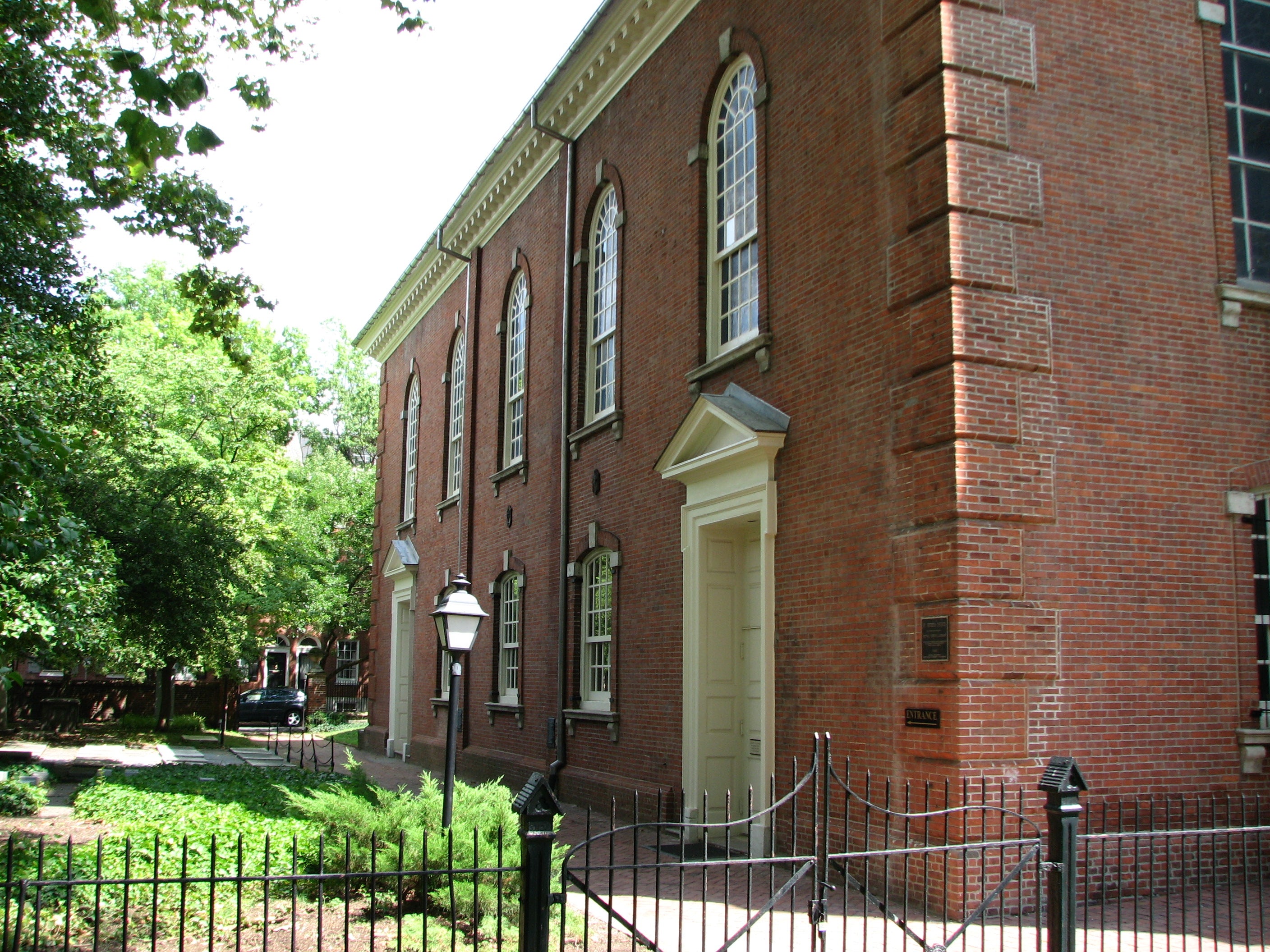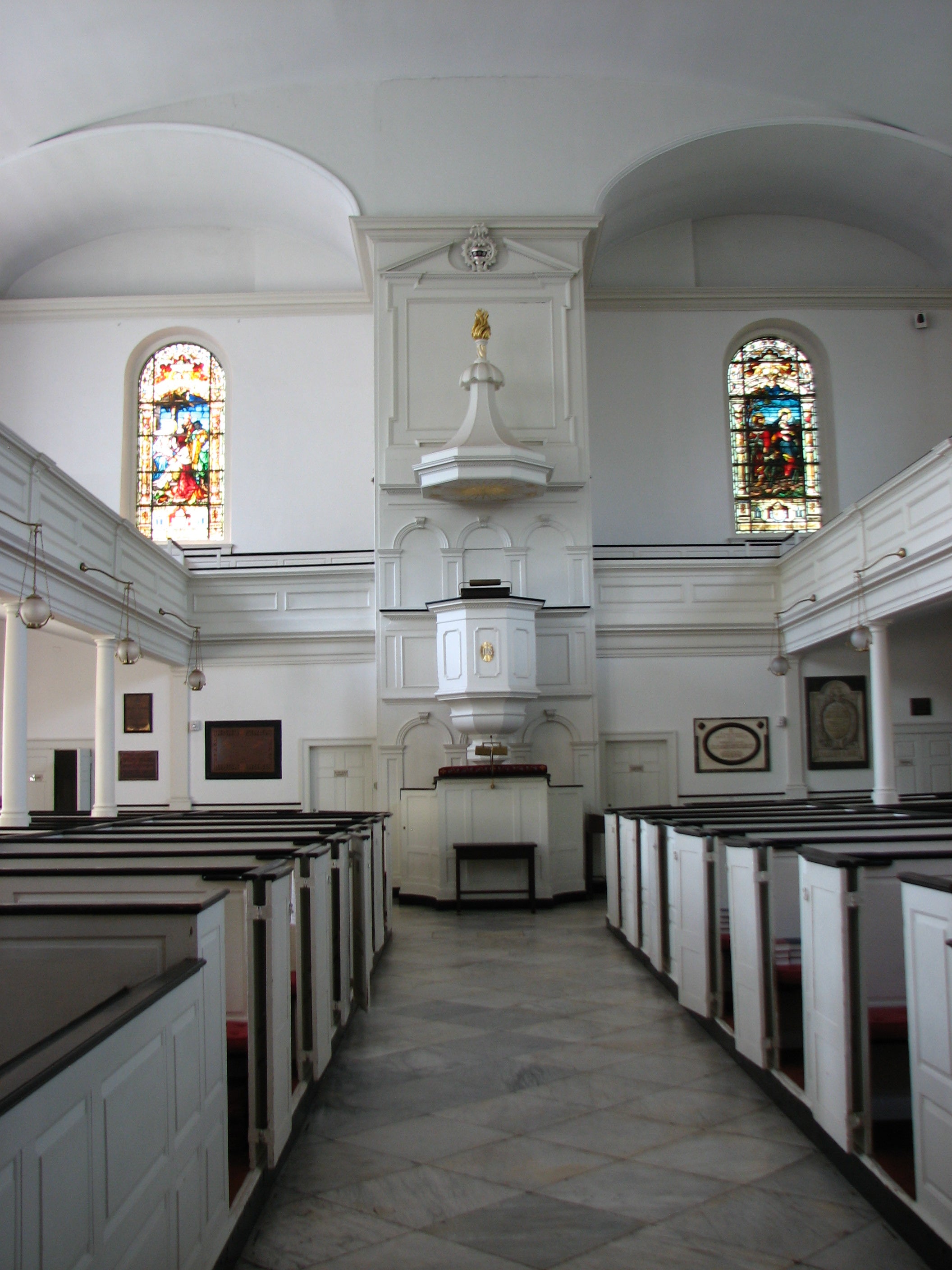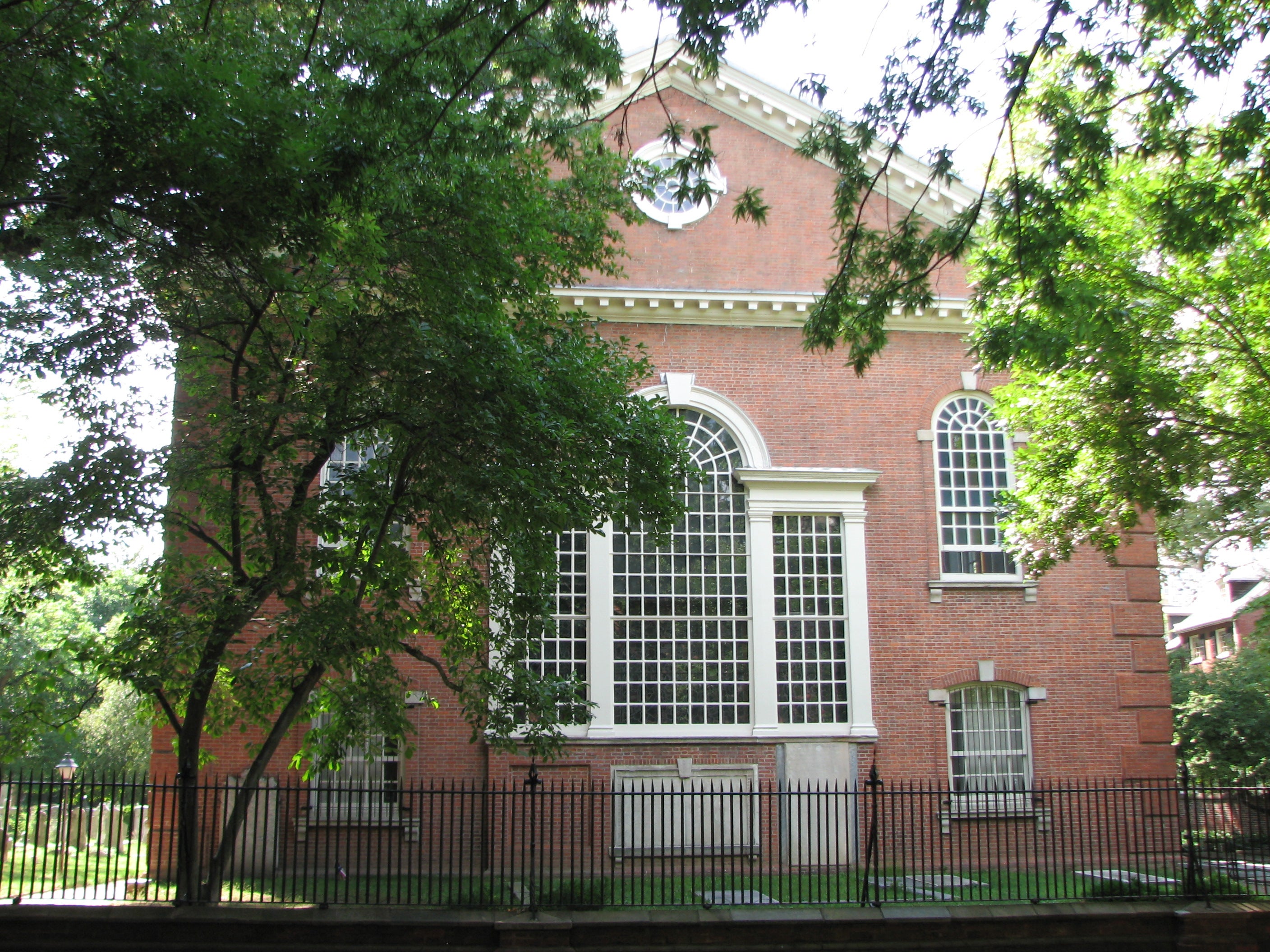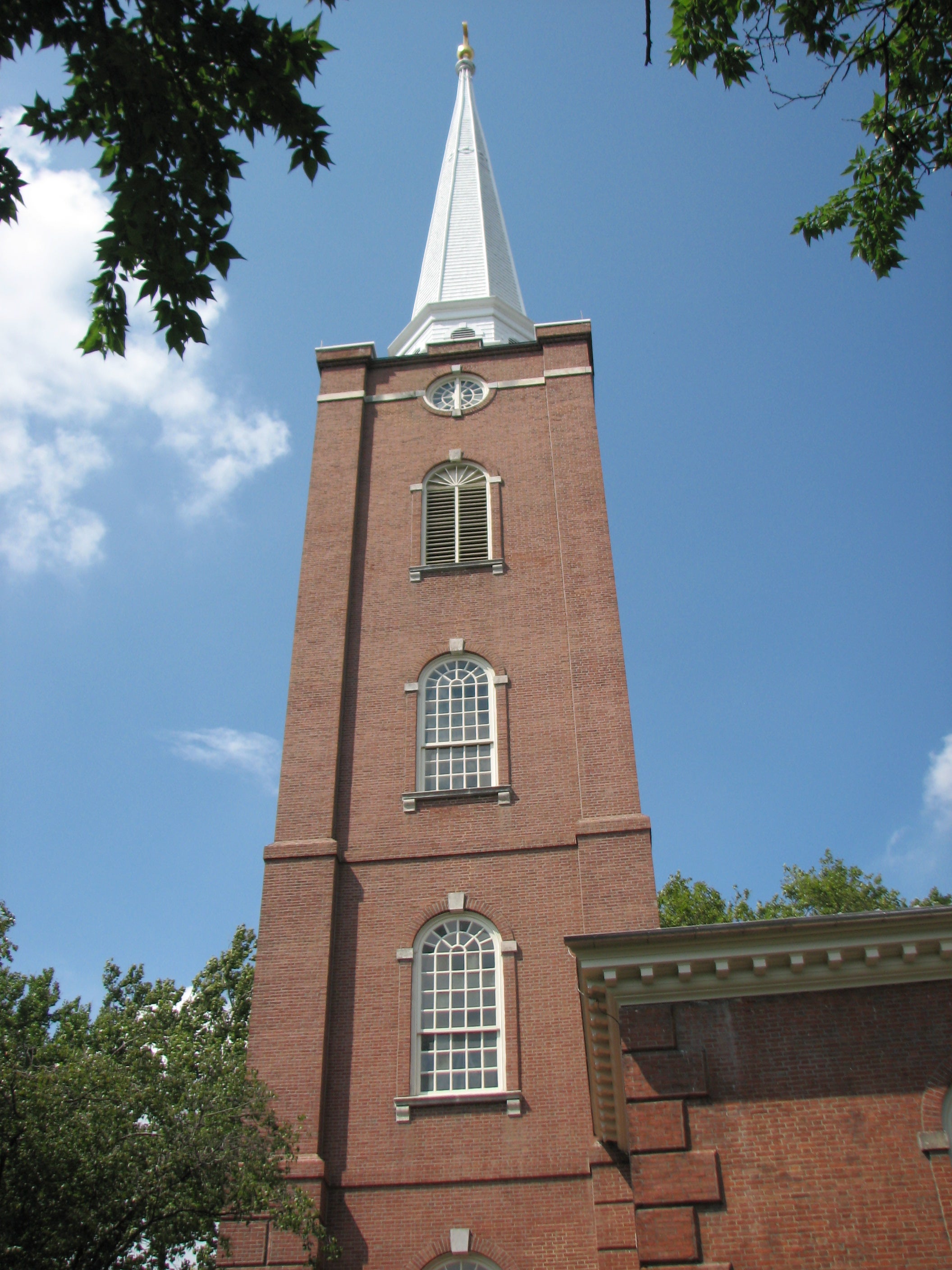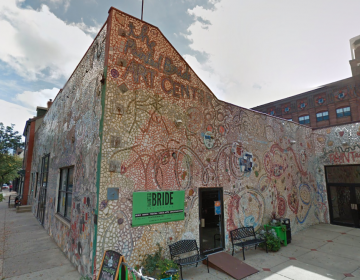Look Up! Leading architects from two centuries designed historic church
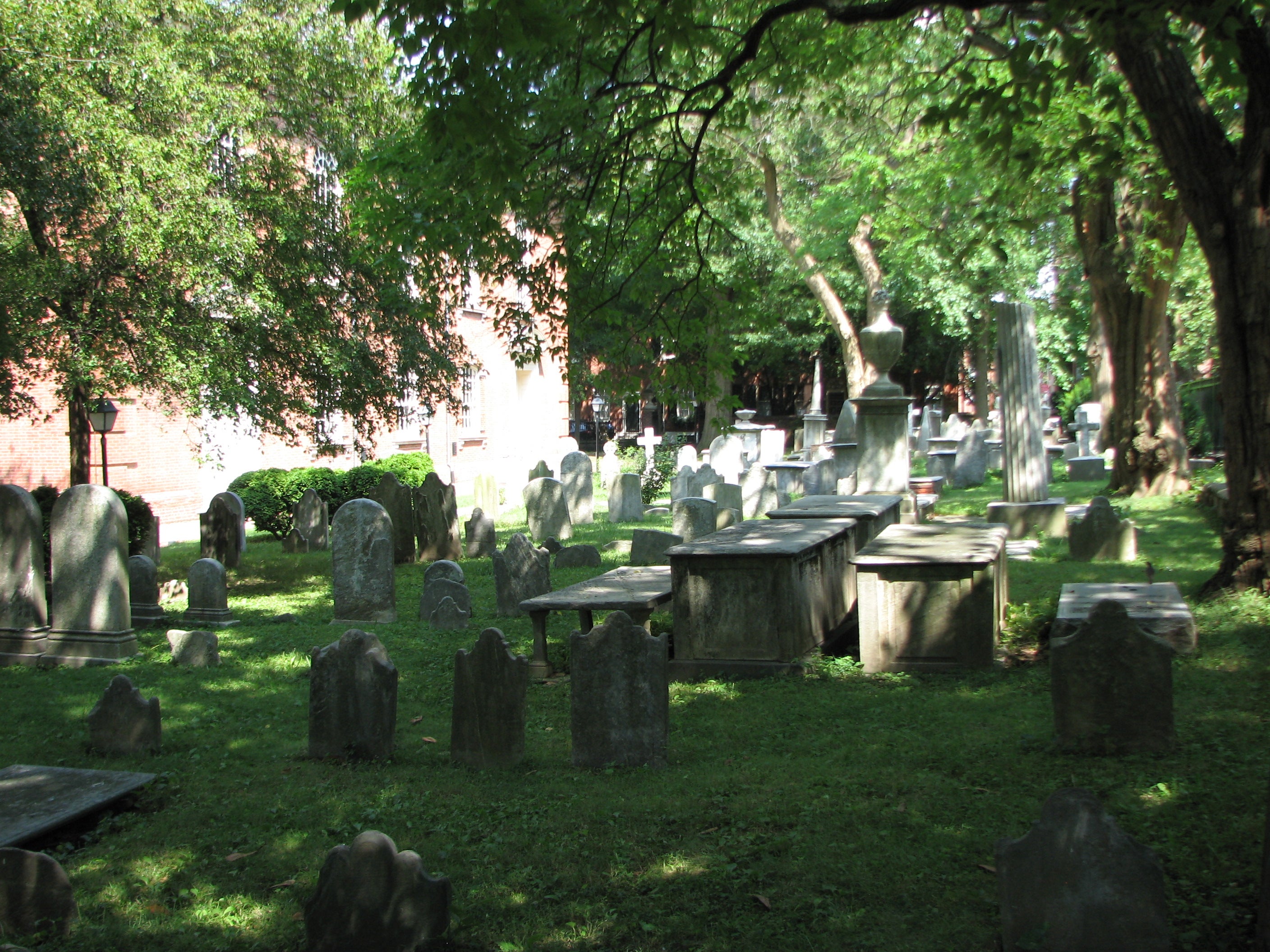
Robert Smith designed the pre-Revolutinary building. William Strickland added the steeple more than 80 years later.
“Look Up!” is a PlanPhilly feature that encourages appreciation of our architectural and historical environment. The photo essays focus on different Philadelphia areas and their distinctive building styles and details, all of which make up the physical fabric of the city and region.
The distinguished St. Peter’s Church at 3rd and Pine Streets was the result of two of Philadelphia’s foremost architects, working in separate centuries on the building.
Robert Smith, the Scottish carpenter-architect considered the best builder in Colonial America, was asked to design St. Peter’s when the congregation at Christ Church outgrew that building.
Smith, who had built Christ Church’s steeple and would later design Carpenter’s Hall, erected St. Peter’s in 1758-61. The modest but elegant Georgian design features a large Palladian window on the east side and arched windows along the north and south sides. Inside, the altar and pulpit were placed at opposite ends of the main aisle, and high-backed pews, raised off the floor, protected congregants from winter drafts.
The first service was held on Sept. 4, 1761, and the church has been in continuous use since then.
St. Peter’s six-story steeple was added in 1842 by William Strickland, the country’s leading architect in the Greek Revival style. Strickland’s great works include the Merchant’s Exchange, U.S. Naval Home, and the Second Bank of the United States. He followed Smith’s Georgian influence on the church steeple, as well as in the reconstruction of the steeple of Independence Hall.
The St. Peter’s site is visited as much for who’s buried there as it for the beautiful church building. Among those at rest in the churchyard are painter Charles Willson Peale, Vice President George Mifflin Dallas, Commodore Stephen Decatur, and seven American-Indian chiefs who died of smallpox on their visit to Philadelphia in 1793.
The church was added to the National Register of Historic Places in 1996.
Contact the writer at ajaffe@planphilly.com.
WHYY is your source for fact-based, in-depth journalism and information. As a nonprofit organization, we rely on financial support from readers like you. Please give today.



